 W
WActive learning is "a method of learning in which students are actively or experientially involved in the learning process and where there are different levels of active learning, depending on student involvement." Bonwell & Eison (1991) states that "students participate [in active learning] when they are doing something besides passively listening." In a report from the Association for the Study of Higher Education (ASHE), authors discuss a variety of methodologies for promoting active learning. They cite literature that indicates students must do more than just listen in order to learn. They must read, write, discuss, and be engaged in solving problems. This process relates to the three learning domains referred to as knowledge, skills and attitudes (KSA). This taxonomy of learning behaviors can be thought of as "the goals of the learning process." In particular, students must engage in such higher-order thinking tasks as analysis, synthesis, and evaluation.
 W
WArtful Learning is an educational philosophy model that is concept-based and interdisciplinary. Artful Learning was initiated by Leonard Bernstein and is rooted in using the arts to enhance all areas of education.
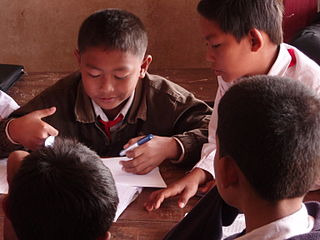 W
WAttention deficit hyperactivity disorder (ADHD) is a neurodevelopmental disorder characterized by inattention, or excessive activity and impulsivity, which are otherwise not appropriate for a person's age. Some individuals with ADHD also display difficulty regulating emotions or problems with executive function. For a diagnosis, the symptoms should appear before a person is twelve years old, be present for more than six months, and cause problems in at least two settings. In children, problems paying attention may result in poor school performance. Additionally, there is an association with other mental disorders and substance misuse. Although it causes impairment, particularly in modern society, many people with ADHD can have sustained attention for tasks they find interesting or rewarding.
 W
WRandy Elliot Bennett is an American educational researcher who specializes in educational assessment. He is currently the Norman O. Frederiksen Chair in Assessment Innovation at Educational Testing Service in Princeton, NJ. His research and writing focus on bringing together advances in cognitive science, technology, and measurement to improve teaching and learning. He received the ETS Senior Scientist Award in 1996, the ETS Career Achievement Award in 2005, the Teachers College, Columbia University Distinguished Alumni Award in 2016, Fellowship status in the American Educational Research Association (AERA) in 2017, the National Council on Measurement in Education's (NCME) Bradley Hanson Award for Contributions to Educational Measurement in 2019, and the E. F. Lindquist Award from AERA and ACT in 2020. Randy Bennett was elected President of both the International Association for Educational Assessment (IAEA), a worldwide organization primarily constituted of governmental and NGO measurement organizations, and the National Council on Measurement in Education (NCME), whose members are employed in universities, testing organizations, education departments, and school districts.
 W
WThe Bully: A Discussion and Activity Story is a 40-page children's story and activity book by Rita Y. Toews published in 2003. The story focuses on giving children a voice as to how bullying makes them feel, and educates parents on how to handle a bully situation in a positive manner. The book can be used in a classroom, one-on-one with a counsellor or with a parent/caregiver.
 W
WClassroom Management is a term teachers use to describe the process of ensuring that classroom lessons run smoothly without disruptive behavior from students compromising the delivery of instruction. The term also implies the prevention of disruptive behavior preemptively, as well as effectively responding to it after it happens.
 W
WCommunication apprehension is the level of anxiety triggered by the real or anticipated communication act, as defined by McCroskey. The fear of judgment from the audience and self-image is what fuels the anxiety. Communication apprehension, CA, can cause a variety of involuntary responses such as "stomach butterflies" which is your body shutting the digestive system down and going into the “fight-or-flight” response, shaking, nausea, sweating, forgetting the information, among many others. The term communication apprehension is usually connected with 'stage fright'; however, this response is not necessarily connected with a delivery on a stage or in front of a large audience. This anxiety can be caused by any of the four forms of communication: interpersonal, group, public, and mass communication. The most common and reliable test used to measure an individual’s CA level when exposed to these forms of communication is called the Personal Report of Communication Apprehension, also known as the PRCA-24 test, and it follows a survey format.
 W
WConstructionist learning is when learners create mental models to understand the world around them. Constructionism advocates student-centered, discovery learning where students use information they already know to acquire more knowledge. Students learn through participation in project-based learning where they make connections between different ideas and areas of knowledge facilitated by the teacher through coaching rather than using lectures or step-by-step guidance. Further, constructionism holds that learning can happen most effectively when people are active in making tangible objects in the real world. In this sense, constructionism is connected with experiential learning and builds on Jean Piaget's epistemological theory of constructivism.
 W
WConstructivism is a theory in education that recognizes learners construct new understandings and knowledge, integrating with what they already know. This includes knowledge gained prior to entering school. It is associated with various philosophical positions, particularly in epistemology as well as ontology, politics, and ethics. The origin of the theory is also linked to Jean Piaget's theory of cognitive development.
 W
WCreativity is a phenomenon whereby something somehow new and somehow valuable is formed. The created item may be intangible or a physical object.
 W
WJohn Dewey was an American philosopher, psychologist, and educational reformer whose ideas have been influential in education and social reform. He was one of the most prominent American scholars in the first half of the twentieth century.
 W
WThe relationships between digital media use and mental health have been investigated by various researchers—predominantly psychologists, sociologists, anthropologists, and medical experts—especially since the mid-1990s, after the growth of the World Wide Web. A significant body of research has explored "overuse" phenomena, commonly known as "digital addictions", or "digital dependencies". These phenomena manifest differently in many societies and cultures. Some experts have investigated the benefits of moderate digital media use in various domains, including in mental health, and the treatment of mental health problems with novel technological solutions.
 W
WDiscovery learning is a technique of inquiry-based learning and is considered a constructivist based approach to education. It is also referred to as problem-based learning, experiential learning and 21st century learning. It is supported by the work of learning theorists and psychologists Jean Piaget, Jerome Bruner, and Seymour Papert.
 W
WThe DO-IT Center is based at the University of Washington (UW) in Seattle, Washington. Founded in 1992, DO-IT’s mission is to increase the successful participation of people with disabilities in postsecondary education and careers, in STEM fields and careers, and in computing fields and careers throughout the U.S. It directs the national AccessSTEM program, and co-directs the national AccessComputing Alliance focused on engaging people with disabilities in computing fields.
 W
WIn the theory of community of practice, an interdisciplinary field between sociology of education and educational psychology, the notion of a duality is used to capture the idea of the tension between two opposing forces which become a driving force for change and creativity. Wenger uses the concept of dualities to examine the forces that create and sustain a community of practice. He describes a duality as "a single conceptual unit that is formed by two inseparable and mutually constitutive elements whose inherent tensions and complementarity give the concept richness and dynamism".
 W
WAn educational psychologist is a psychologist whose differentiating functions may include diagnostic and psycho-educational assessment, psychological counseling in educational communities, community-type psycho-educational intervention, and mediation, coordination, and referral to other professionals, at all levels of the educational system. Many countries use this term to signify those who provide services to students, their teachers, and families while other countries use this term to signify academic expertise in teaching Educational Psychology.
 W
WEnactive interfaces are interactive systems that allow organization and transmission of knowledge obtained through action. Examples are interfaces that couple a human with a machine to do things usually done unaided, such as shaping a three-dimensional object using multiple modality interactions with a data base, or using interactive video to allow a student to visually engage with mathematics concepts. Enactive interface design can be approached through the idea of raising awareness of affordances, that is, optimization of the awareness of possible actions available to someone using the enactive interface. This optimization involves visibility, affordance, and feedback.
 W
WEnvironmental enrichment is the stimulation of the brain by its physical and social surroundings. Brains in richer, more stimulating environments have higher rates of synaptogenesis and more complex dendrite arbors, leading to increased brain activity. This effect takes place primarily during neurodevelopment, but also during adulthood to a lesser degree. With extra synapses there is also increased synapse activity, leading to an increased size and number of glial energy-support cells. Environmental enrichment also enhances capillary vasculation, providing the neurons and glial cells with extra energy. The neuropil expands, thickening the cortex. Research on rodent brains suggests that environmental enrichment may also lead to an increased rate of neurogenesis.
 W
WIn positive psychology, a flow state, also known colloquially as being in the zone, is the mental state in which a person performing some activity is fully immersed in a feeling of energized focus, full involvement, and enjoyment in the process of the activity. In essence, flow is characterized by the complete absorption in what one does, and a resulting transformation in one's sense of time.
 W
WA high-stakes test is a test with important consequences for the test taker. Passing has important benefits, such as a high school diploma, a scholarship, or a license to practice a profession. Failing has important disadvantages, such as being forced to take remedial classes until the test can be passed, not being allowed to drive a car, or difficulty finding employment.
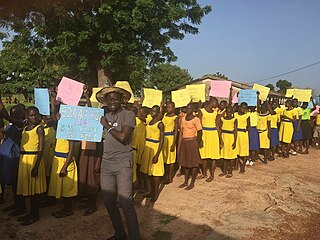 W
WInclusion in education refers to a model wherein students with special needs spend most or all of their time with non-special needs students. It arise in the context of special education with an individualized education program or 504 plan, and is built on the notion that it is more effective for students with special needs to have said mixed experience for them to be more successful in social interactions leading to further success in life. Inclusion rejects but still provides the use of special schools or classrooms to separate students with disabilities from students without disabilities. Schools with inclusive classrooms do not believe in separate classrooms. They do not have their own separate world so they have to learn how to operate with students while being less focused on by teachers due to a higher student to teacher ratio.
 W
WInformal learning is any learning that is not formal learning or non-formal learning, such as self-directed learning or learning from experience. Informal learning is organized differently than formal and non-formal learning because it has no set objective in terms of learning outcomes and is never intentional from the learner's standpoint. For all learners this includes heuristic language building, socialization, enculturation, and play. Informal learning is a pervasive ongoing phenomenon of learning via participation or learning via knowledge creation, in contrast with the traditional view of teacher-centered learning via knowledge acquisition.
 W
WKnowledge transfer refers to sharing or disseminating of knowledge and providing inputs to problem solving. In organizational theory, knowledge transfer is the practical problem of transferring knowledge from one part of the organization to another. Like knowledge management, knowledge transfer seeks to organize, create, capture or distribute knowledge and ensure its availability for future users. It is considered to be more than just a communication problem. If it were merely that, then a memorandum, an e-mail or a meeting would accomplish the knowledge transfer. Knowledge transfer is more complex because:knowledge resides in organizational members, tools, tasks, and their subnetworks and much knowledge in organizations is tacit or hard to articulate.
 W
WA latchkey kid, or latchkey child, is a child who returns to an empty home after school or a child who is often left at home with no supervision because his or her parents are away at work. The term refers to children as young as five years old who provide care or to older children who supervise their younger siblings.
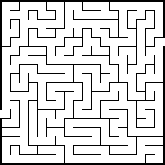 W
WLatent learning is the subconscious retention of information without reinforcement or motivation. In latent learning, one changes behavior only when there is sufficient motivation later than when they subconsciously retained the information.
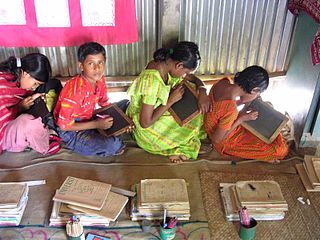 W
WLearning is the process of acquiring new understanding, knowledge, behaviors, skills, values, attitudes, and preferences. The ability to learn is possessed by humans, animals, and some machines; there is also evidence for some kind of learning in certain plants. Some learning is immediate, induced by a single event, but much skill and knowledge accumulate from repeated experiences. The changes induced by learning often last a lifetime, and it is hard to distinguish learned material that seems to be "lost" from that which cannot be retrieved.
 W
WLearning disability, learning disorder, or learning difficulty is a condition in the brain that causes difficulties comprehending or processing information and can be caused by several different factors. Given the "difficulty learning in a typical manner", this does not exclude the ability to learn in a different manner. Therefore, some people can be more accurately described as having a "learning difference", thus avoiding any misconception of being disabled with a lack of ability to learn and possible negative stereotyping. In the United Kingdom, the term "learning disability" generally refers to an intellectual disability, while difficulties such as dyslexia and dyspraxia are usually referred to as "learning difficulties".
 W
WLearning theory describes how students receive, process, and retain knowledge during learning. Cognitive, emotional, and environmental influences, as well as prior experience, all play a part in how understanding, or a world view, is acquired or changed and knowledge and skills retained.
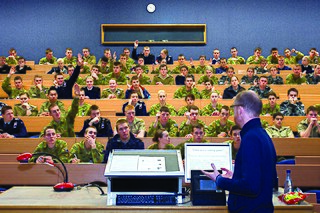 W
WA lecture is an oral presentation intended to present information or teach people about a particular subject, for example by a university or college teacher. Lectures are used to convey critical information, history, background, theories, and equations. A politician's speech, a minister's sermon, or even a business person’s sales presentation may be similar in form to a lecture. Usually the lecturer will stand at the front of the room and recite information relevant to the lecture's content.
 W
WA mnemonic device, or memory device, is any learning technique that aids information retention or retrieval (remembering) in the human memory.
 W
WThe Montessori method of education was developed by Italian physician Maria Montessori. Emphasizing independence, it views children as naturally eager for knowledge and capable of initiating learning in a sufficiently supportive and well-prepared learning environment. It discourages some conventional measures of achievement, such as grades and tests. Montessori developed her theories in the early 1900s through scientific experimentation with her students; the method has since been used in many parts of the world, in public and private schools alike.
 W
WMontessori sensorial materials are materials used in the Montessori classroom to help a child develop and refine their five senses. Use of these materials constitutes the next level of difficulty after those of practical life.
 W
WThe need for cognition (NFC), in psychology, is a personality variable reflecting the extent to which individuals are inclined towards effortful cognitive activities.
 W
WNon-formal learning includes various structured learning situations which do not either have the level of curriculum, syllabus, accreditation and certification associated with 'formal learning', but have more structure than that associated with 'informal learning', which typically take place naturally and spontaneously as part of other activities. These form the three styles of learning recognised and supported by the OECD.
 W
WNote-taking is the practice of recording information from different sources and platforms. By taking notes, the writer records the essence of the information, freeing their mind from having to recall everything. Notes are commonly drawn from a transient source, such as an oral discussion at a meeting, or a lecture, in which case the notes may be the only record of the event.
 W
WOrality is thought and verbal expression in societies where the technologies of literacy are unfamiliar to most of the population. The study of orality is closely allied to the study of oral tradition.
 W
WThe Organization workshop (OW) – or "Laboratorio Organizacional" (LO) in both Portuguese and Spanish – is a CHAT-based learning event where participants master new organizational as well as social knowledge and skills through a learning-by-doing approach. It is aimed at large groups of unemployed and underemployed, a large number of whom sometimes may be persons with lower levels of education (LLEs). The OW addresses locally identified problems which can only be solved by collaborating groups. During a Workshop participants form a temporary enterprise which they themselves manage, an enterprise which contracts to do work at market rates. Once the workshop temporary enterprise is over, organizational, management and vocational skills gained can be used to form new businesses or social enterprises.
 W
WPassive learning is a method of learning or instruction where students receive information from the instructor and internalize it. It is a method "where the learner receives no feedback from the instructor". The term is often used together with direct instruction and lecturing, with passive learning being the result or intended outcome of the instruction. This style of learning is teacher-centered and contrasts to active learning, which is student-centered, whereby students take an active or participatory role in the learning process, and to the Socratic method where students and instructors engage in cooperative argumentative dialogue. Passive learning is a traditional method utilized in factory model schools and modern schools, as well as historic and contemporary religious services in churches (sermons), mosques, and synagogues.
 W
WPedagogy, most commonly understood as the approach to teaching, is the theory and practice of learning, and how this process influences, and is influenced by, the social, political and psychological development of learners. Pedagogy, taken as an academic discipline, is the study of how knowledge and skills are imparted in an educational context, and it considers the interactions that take place during learning. Both the theory and practice of pedagogy vary greatly, as they reflect different social, political, and cultural contexts.
 W
WThe picture superiority effect refers to the phenomenon in which pictures and images are more likely to be remembered than words. This effect has been demonstrated in numerous experiments using different methods. It is based on the notion that "human memory is extremely sensitive to the symbolic modality of presentation of event information". Explanations for the picture superiority effect are not concrete and are still being debated.
 W
WProblem-based learning (PBL) is a student-centered pedagogy in which students learn about a subject through the experience of solving an open-ended problem found in trigger material. The PBL process does not focus on problem solving with a defined solution, but it allows for the development of other desirable skills and attributes. This includes knowledge acquisition, enhanced group collaboration and communication. The PBL process was developed for medical education and has since been broadened in applications for other programs of learning. The process allows for learners to develop skills used for their future practice. It enhances critical appraisal, literature retrieval and encourages ongoing learning within a team environment.
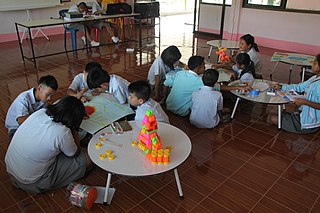 W
WProject-based learning (PBL) is a student-centered pedagogy that involves a dynamic classroom approach in which it is believed that students acquire a deeper knowledge through active exploration of real-world challenges and problems. Students learn about a subject by working for an extended period of time to investigate and respond to a complex question, challenge, or problem. It is a style of active learning and inquiry-based learning. PBL contrasts with paper-based, rote memorization, or teacher-led instruction that presents established facts or portrays a smooth path to knowledge by instead posing questions, problems or scenarios.
 W
WReading is the process of taking in the sense or meaning of letters, symbols, etc., especially by sight or touch.
 W
WResearch & Education Association (REA) publishes test preparation materials and study guides, both in print and electronic form.
 W
WThe most commonly used definition of school belonging comes from a 1993 academic article by researchers Carol Goodenow and Kathleen Grady, who describe school belonging as "the extent to which students feel personally accepted, respected, included, and supported by others in the school social environment." The construct of school belonging involves feeling connected with and attached to one's school. It also encompasses involvement and affiliation with one's school community. Conversely, students who do not feel a strong sense of belonging within their school environment are frequently described as being alienated or disaffected. There are a number of terms within educational research that are used interchangeably with school belonging, including school connectedness, school attachment, and school engagement.
 W
WOne's self-concept is a collection of beliefs about oneself. Generally, self-concept embodies the answer to "Who am I?".
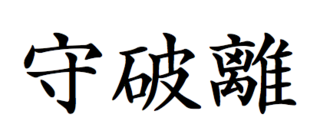 W
WShuhari is a Japanese martial art concept which describes the stages of learning to mastery. It is sometimes applied to other disciplines, such as Go.
 W
WSix Thinking Hats was written by Dr. Edward de Bono. "Six Thinking Hats" and the associated idea parallel thinking provide a means for groups to plan thinking processes in a detailed and cohesive way, and in doing so to think together more effectively.
 W
WThe Socratic method is a form of cooperative argumentative dialogue between individuals, based on asking and answering questions to stimulate critical thinking and to draw out ideas and underlying presuppositions. It is named after the Classical Greek philosopher Socrates and is introduced by him in Plato's Theaetetus as midwifery (maieutics) because it is employed to bring out definitions implicit in the interlocutors' beliefs, or to help them further their understanding.
 W
WSocratic questioning was named after Socrates. He utilized an educational method that focused on discovering answers by asking questions from his students. According to Plato, who was one of his students, Socrates believed that "the disciplined practice of thoughtful questioning enables the scholar/student to examine ideas and be able to determine the validity of those ideas". Plato described this rigorous method of teaching to explain that the teacher assumes an ignorant mindset in order to compel the student to assume the highest level of knowledge. Thus, a student has the ability to acknowledge contradictions, recreate inaccurate or unfinished ideas and critically determine necessary thought.
 W
WThe Standards for Educational and Psychological Testing is a set of testing standards developed jointly by the American Educational Research Association (AERA), American Psychological Association (APA), and the National Council on Measurement in Education (NCME).
 W
WThe structure of observed learning outcomes (SOLO) taxonomy is a model that describes levels of increasing complexity in students' understanding of subjects. It was proposed by John B. Biggs and Kevin F. Collis.
 W
WSubvocal recognition (SVR) is the process of taking subvocalization and converting the detected results to a digital output, aural or text-based.
 W
WSubvocalization, or silent speech, is the internal speech typically made when reading; it provides the sound of the word as it is read. This is a natural process when reading, and it helps the mind to access meanings to comprehend and remember what is read, potentially reducing cognitive load.
 W
WThe Summer Enrichment Program (SEP) is a summer camp for gifted and talented children entering grades 5 to 10, located at Center for the Education and Study of the Gifted, Talented, Creative at the University of Northern Colorado in Greeley, Colorado.
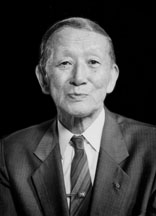 W
WShinichi Suzuki was a Japanese musician, philosopher, and educator and the founder of the international Suzuki method of music education and developed a philosophy for educating people of all ages and abilities. Considered an influential pedagogue in music education of children, he often spoke of the ability of all children to learn things well, especially in the right environment, and of developing the heart and building the character of music students through their music education. Before his time, it was rare for children to be formally taught classical instruments from an early age and even more rare for children to be accepted by a music teacher without an audition or entrance examination. Not only did he endeavor to teach children the violin from early childhood and then infancy, his school in Matsumoto did not screen applicants for their ability upon entrance. Suzuki was also responsible for the early training of some of the earliest Japanese violinists to be successfully appointed to prominent western classical music organizations. During his lifetime, he received several honorary doctorates in music including from the New England Conservatory of Music (1956), and the Oberlin College Conservatory of Music, was proclaimed a Living National Treasure of Japan, and was nominated for the Nobel Peace prize.
 W
WA test or examination is an educational assessment intended to measure a test-taker's knowledge, skill, aptitude, physical fitness, or classification in many other topics. A test may be administered verbally, on paper, on a computer, or in a predetermined area that requires a test taker to demonstrate or perform a set of skills.
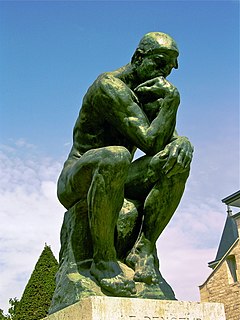 W
WTypical intellectual engagement (TIE) is a personality construct referring to a person's enjoyment of intellectually demanding activities. TIE was developed to identify aspects of personality most closely related to intelligence and knowledge and measures a person's typical performance in intellectual domains rather than their maximal performance. TIE is moderately positively associated with crystallized intelligence, and with general knowledge, and predicts academic performance. TIE is hard to distinguish from the earlier construct need for cognition and is positively correlated with openness to experience.
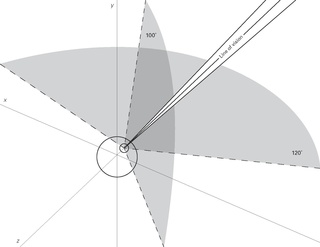 W
WVision span or perceptual span is a controversial concept referring to the angular span, within which the human eye has sharp enough vision to perform an action accurately. The visual field of the human eye spans approximately 120 degrees of arc. However, most of that arc is peripheral vision. The human eye has much greater resolution in the macula, where there is a higher density of cone cells. The field of view that is observed with sufficient resolution to read text typically spans about 6 degrees of arc, which is wide enough to allow a clear view of about five words in a row when printed text at ordinary size is held about 50 centimeters from the eyes. Regarding face processing, the field of view with a sufficient amount of information in order to recognise faces accurately spans about 7° which represents about 45% of a face. The brain creates the illusion of having a greater visual span by automatically and unconsciously moving the center of vision into any area of interest in the field of view.